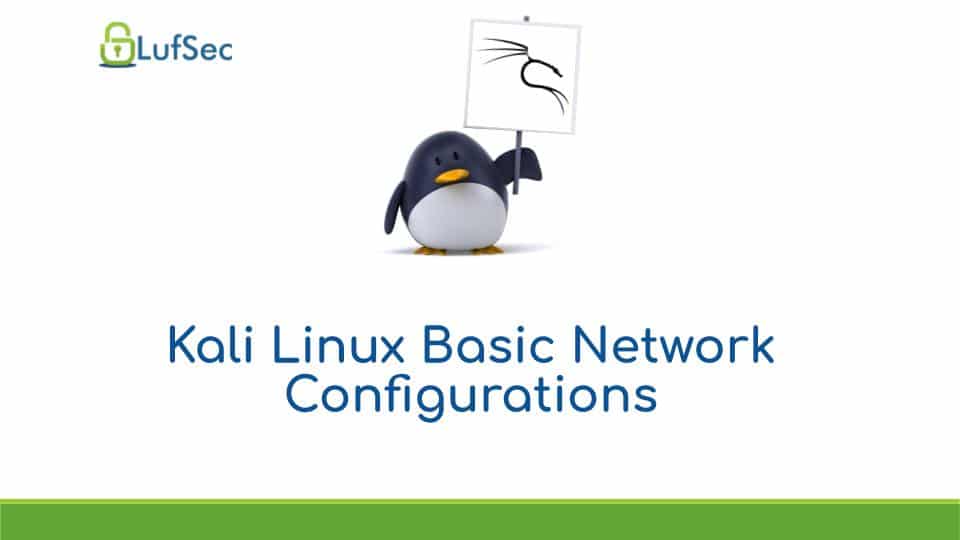In this tutorial, we dive into the essentials of Kali Linux network configurations. This video provides a comprehensive guide to understanding and utilizing the basic network commands and files that are pivotal in managing and troubleshooting networks within the Kali Linux environment.
Kali Linux, renowned for its robust penetration testing capabilities, is an essential tool for cybersecurity professionals. Mastering its network configurations is not only vital for daily operations but also a key component in preparing for esteemed certifications such as the Kali Certified Linux Professional (KCLP) and the Offensive Security Certified Professional (OSCP).
Why Network Configuration Knowledge is Crucial
Network configuration skills are foundational for anyone working with Linux systems, whether you are an aspiring network administrator, a seasoned IT professional, or a cybersecurity enthusiast. Proper network setup and troubleshooting are critical for ensuring seamless connectivity and security in any Linux environment.
In this video, you will learn about the most commonly used network commands in Kali Linux. These commands help you to configure network interfaces, manage routing tables, set up hostname resolution, and much more. We also cover important configuration files that store network settings and preferences.
Configuring Network Settings in Kali Linux
ifconfig: This command is used to configure and display network interfaces. You can use it to assign IP addresses, enable or disable interfaces, and troubleshoot network issues.
ip: A more powerful and versatile command than ifconfig, the ip command is used to show and manipulate routing, devices, policy routing, and tunnels.
ping: One of the simplest yet most effective network troubleshooting tools. It checks the connectivity between your system and another host, helping diagnose network issues.
netstat: This command displays network connections, routing tables, interface statistics, masquerade connections, and multicast memberships.
traceroute: It tracks the route packets take to reach a destination. This is useful for diagnosing routing problems and understanding the path data takes through the network.
nslookup: This command is used to query Internet name servers interactively. It is useful for troubleshooting DNS problems.
Essential Network Configuration Files
/etc/network/interfaces: This file contains network interface configuration information. It is used by the ifup and ifdown commands to configure network interfaces.
/etc/hosts: A simple text file that maps IP addresses to hostnames. It is used for hostname resolution.
/etc/resolv.conf: This file contains the DNS servers your system will use to resolve domain names into IP addresses.
/etc/hostname: This file contains the system’s hostname, which is used during the boot process to set the hostname.
/etc/hosts.allow and /etc/hosts.deny: These files are used to configure which hosts are allowed or denied access to network services on your system.
Real-World Applications
Understanding these commands and configuration files is not only crucial for passing certifications but also for real-world applications. Whether you are managing a small home network or an enterprise-level infrastructure, these skills will ensure you can maintain and secure your network effectively.
Kali Linux is not just for penetration testers. Its network configuration capabilities make it a powerful tool for network administrators, cybersecurity professionals, and anyone looking to deepen their understanding of Linux networking.
Broader Linux Compatibility
The network configuration skills you acquire in Kali Linux are transferable to other Linux distributions such as Ubuntu, Fedora, CentOS, and more. These distributions share similar command structures and file locations, making your knowledge versatile and widely applicable.
Conclusion
By mastering the basic network configurations in Kali Linux, you are setting a solid foundation for your career in IT and cybersecurity. These skills are not only essential for certifications like KCLP and OSCP but also for everyday tasks in network management and troubleshooting.
We hope you find this video tutorial both informative and practical. Whether you are a beginner or looking to refine your skills, this guide will help you navigate the complexities of Linux network configurations with confidence.
Don’t forget to check out the video for a detailed walkthrough and hands-on demonstrations of these commands and configurations. Happy learning and happy networking!

